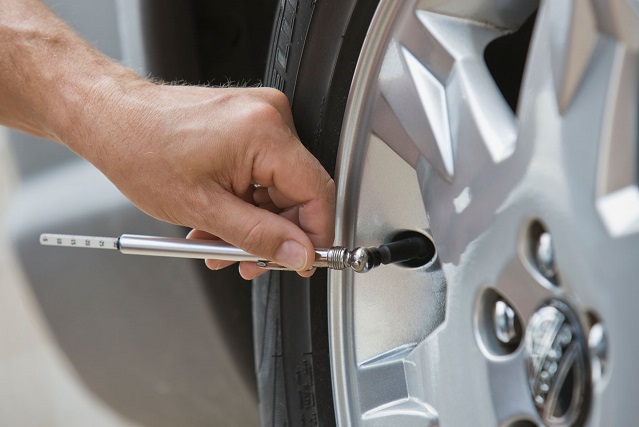Winter can be a taxing season on both man and machine. What does this mean for drivers? Come spring, just like the natural world, your car is likely in need of rejuvenation.
A well-maintained car is a safe car, which is what you’ll need for springtime driving. April’s showers make for slippery roads and the potholes that began forming over winter will come to bloom once the weather turns.
Car maintenance should be done year-round, but there are certain aspects to pay particular attention to when spring arrives. Whether tackling these tasks yourself or leaving it to the professionals at a AAA Approved Auto Repair facility, here are some spring car care tips to be mindful of.
Test Your Car Battery
Car batteries work harder to power vehicles during the winter. The best way to maintain your car battery is to take longer drives (approximately 30 minutes) on a regular basis. These trips allow the battery to regain its charge. You should also make sure the battery terminals are clean and free of any corrosion. Corroded terminals prevent the flow of electricity.
Roughly one-quarter of all roadside assistance calls AAA Northeast receives are battery related. Don’t wait until you need a jump — get your battery tested today. Request AAA’s Car Battery Service, and we’ll come to you to test your battery and, if needed, replace it on the spot with a new, discounted one. We’ll even take and recycle your old battery for free.
Get answers to more of your car battery questions.
Wash Your Car
Don’t forget to include a good cleaning on your spring car care to-do list. Snow, ice and salt can leave your car looking worse for the wear, especially if you didn’t wash it in the winter. Washing your car may seem straightforward enough, but there is a right way to do it. Improper washing is not only ineffective, but it could also cause damage to your vehicle. Follow this guide to get the job done properly, a process that includes using the two-bucket method and a microfiber cloth.
Don’t limit your cleaning to the car’s exterior. The cabin needs just as much attention. This includes vacuuming, getting rid of any unwanted smells and sanitizing the vehicle.
Once you’re done washing, consider applying a coat of wax. This extra step gives the car’s paint an extra shine and a protective coat.
Don’t Forget Your Car Fluids
One of the most common car care mistakes motorists make is ignoring their vehicle’s fluids, especially engine oil. Clean oil extends the life of your vehicle and helps with engine cooling, so make sure to change your oil according to the manufacturer’s time or mileage recommendations. Changing engine oil is a fairly easy maintenance task if you’re up for it. We guide you through the process here. When you’re done, make sure to dispose of the old oil properly and safely.
But engine oil isn’t the only fluid to keep an eye on when ticking off your spring car care checklist. Coolant, transmission, brake and power-steering fluids should be checked regularly. They can become ineffective if they get contaminated or the levels drop too low.
Still debating between conventional and synthetic engine oil? Here’s what you need to know before making a decision.

Check Your Tires
Winter takes a toll on car tires on multiple fronts, especially when it comes to air pressure. Tires will lose roughly 1 pound per square inch of pressure with every 10-degree drop in temperature. Low tire pressure causes gas mileage to drop and can be a safety hazard. Underinflated tires make it more difficult to steer and stop and can lead to a blowout. Make sure to test your tire pressure regularly and inflate them to the manufacturer’s recommended level.
Rough winter roads can also wear away the tire’s tread. Proper tire maintenance includes ensuring there is more than 4/32 of an inch of tread on each tire. A quick and easy test is to insert a quarter upside down (Washington’s head first) into the tread. If the tread does not reach the top of his head, it’s time for new tires. While you’re inspecting the tires, look for cracks, cuts, chips or dry rot.
As part of your spring car care, don’t forget to also check your vehicle’s spare tire, jack, lug-wrench and wheel lock. If your vehicle’s spare is located under the car, make sure the mechanism that holds the spare tire is working properly.
Other Considerations
We spoke to Jason Malo of AAA-approved Advanced Auto, Inc., who emphasized the importance and benefits of consistent maintenance. “When we’re performing regularly scheduled maintenance, we’re actually extending the life of your vehicle,” he said. “You’ll have fewer (if any) unexpected expensive repairs, and you’ll be able to drive your car for many miles more.”
A few more spring car care reminders:
- Steering, suspension, shocks and wheel alignment should be examined. “Misalignment causes the tires to wear abnormally and wear out too quickly,” Malo warns. “With the condition of the roads nowadays, you should have your car’s alignment checked, and adjusted as needed, at least once a year.”
- Cars that sit for longer periods of time (months or more) can develop brake issues. Have the rotors, calipers and pads checked before heading out.
- Engine filters can become clogged with dirt, dust and pollen. Get these checked and replaced, if needed. “If [a filter] is dirty or old, your car probably isn’t getting enough air,” Malo says. “Imagine running a race with a dirty rag over your mouth. Sound like fun? No? Your car doesn’t like it, either!”
- Hoses and belts can dry out and crack in the winter. Better to find out before you hit the highway on a long drive.
- Rodents and other small critters often take up residence in vehicles to escape the cold. They often build nests and chew wires and hoses, so check for damage under the hood.
AAA offers a wide range of services and discounts that can make proper vehicle maintenance easy and affordable for members. Learn more.
One Thought on “Spring Car Care Tips”
Leave A Comment
Comments are subject to moderation and may or may not be published at the editor’s discretion. Only comments that are relevant to the article and add value to the Your AAA community will be considered. Comments may be edited for clarity and length.














In addition to oil, brake, power steering, transmission and coolant, you should keep your washer fluid filled.
You’ll need it if a car/truck goes by throwing mud at your windshield, bird crap, every day dirt